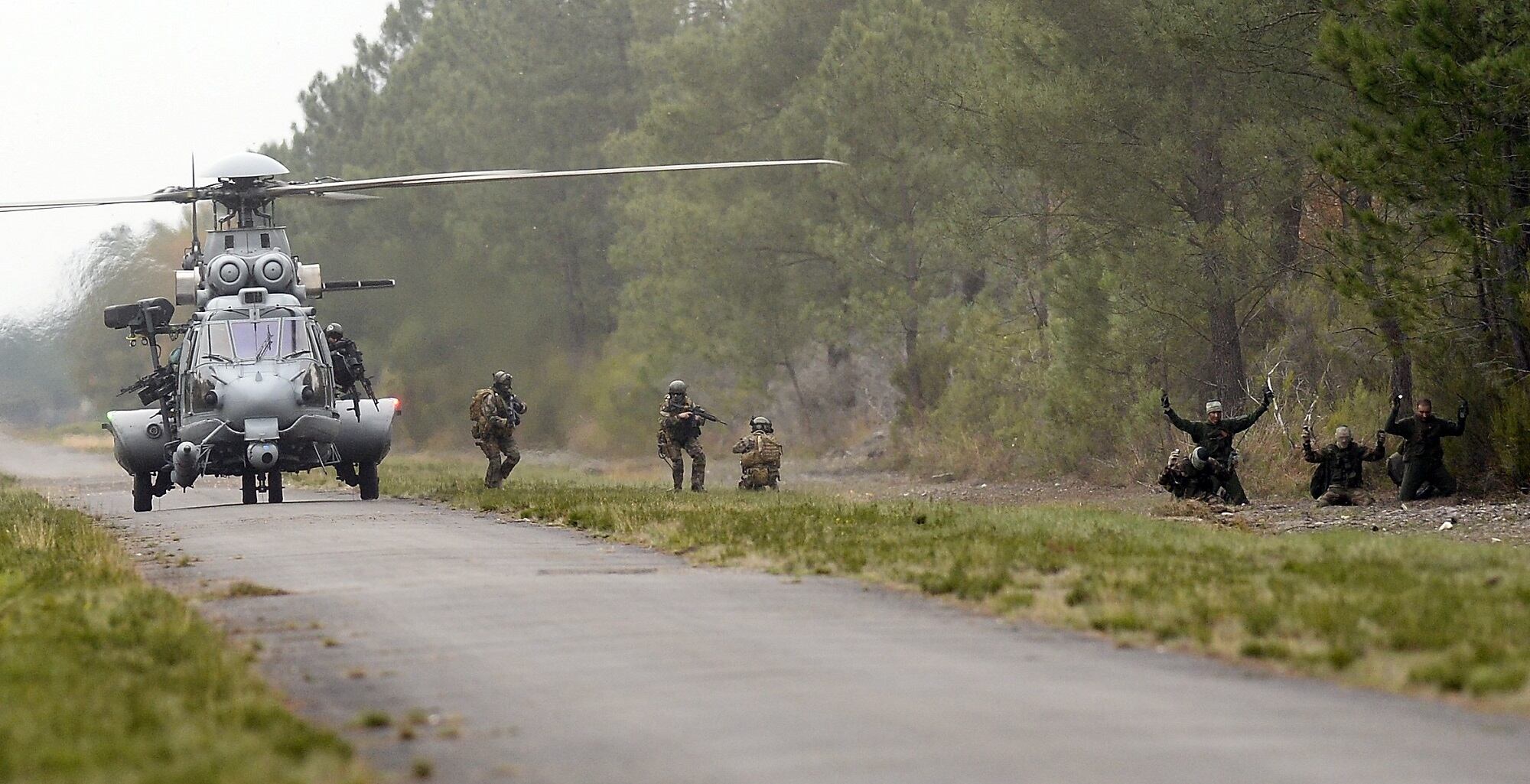PARIS ― The head of France’s special forces has presented a wish list to lawmakers that includes a modified NH90 helicopter and a mini-submarine to complement the Barracuda nuclear attack submarine.
The wish list also includes a new high-frequency radio, a medium-altitude, medium-endurance drone, and a small number of armored civilian vehicles, according to Adm. Laurent Isnard. The head of Special Operations Command spoke to the defense and armed forces committee of the lower house National Assembly on Dec. 19, but the official minutes were only just published on Jan. 22.
A budget of €250 million (U.S. $309 million) over seven years ― or an annual €36 million ― is needed for a “modernization” of the special forces, he said. Apart from aircraft, new equipment needs to be delivered early in the forthcoming multiyear military budget, as a renewal of the vehicle fleet is already two years late.
The special forces head laid out the wish list as French authorities draft the 2019-2025 multiyear budget law.
The special forces have undergone a transformation, as they now conduct “real military campaigns” rather than delivering a “lightning raid,” he said. Conflicts have evolved and enemies are so heavily armed that the battle for Mosul, Iraq, was a “combination of Stalingrad and Twitter,” he said.
RELATED

In Africa, France’s special forces hunt down “terrorists” in a bid to dismantle the networks, in close coordination with the American and French intelligence services, he said. France relied on U.S. support in the counterterrorism drive because the French lack medium-altitude, long-endurance drones and electronic intelligence systems.
NH90 helicopter
In regard to helicopters, it is “imperative to ... modernize and homogenize” the fleet for the special forces, which need the NH90 adapted to a special forces standard, he said. “Acquisition is desired to allow access to these fourth-generation helicopters.”
That would allow the special forces to hand over its Caracal helicopters to the Air Force, he said. Modifying the NH90 offeres interoperability with Australia and New Zealand, which are on the same track, as well as European allies, which fly the same rotorcraft. Working with those partners would cut development costs.
A special forces NH90 would also operate from French Navy warships considering the service already flies that helicopter, he added.
The Air Force lost two Caracal helos in operations last year, and an order for one Caracal is due this year after failing to be accepted in 2017, the parliamentary minutes show.
An Oct. 13, 2016, parliamentary report said the NH90 helicopters should not be less capable than the present fleet of Caracal and new-generation Cougar helos; its architecture should be open and allow upgrades over several decades; and it should be capable of modifications to allow for combat, airdrops, rope drops and night operations.
Mini-submarine
Naval special forces are “waiting impatiently for entry into service of the PSM3G in 2018,” he noted. That is a third-generation, propelled mini-submarine that would work in conjunction with the Barracuda submarine.
That mini-sub would work with the Mistral projection and command ship as an interim measure, he said. “The PSM3G is a rare and immediately available capability effective against the famous ‘area-denial’ threat — the special forces have to be able to get close to an enemy coast to call in a strike,” he said.
The mini-submarine is a relatively large unit, capable of being launched from the Barracuda while submerged, he explained. “They are undetected from departure to return from the mission; that is, to say, an intelligence-gathering mission without being seen, without a signature, without particular risk and with an impressive efficiency,” he said.
The particularly high-performing mini-submarine, according to Isnard, would be fully autonomous, run on battery power and have a navigation system.
The Suffren, the first-of-class Barracuda boat, is due for delivery in 2019 — a year late.
UAV
Speaking to the Air Force’s acquisition of the Reaper drone, he said it’s essential to take into account the special forces’ needs regarding intelligence, surveillance and reconnaissance and weapons handling. Those capabilities were a “game-changer” and would assure a French “strategic autonomy” with regard to the United States. The special forces are closely tracking the development of light ISR aircraft, he said. This aircraft is among the first capabilities sent into theater in which the special forces are deployed.
Special Operations Command plans to launch an acquisition for a medium-altitude, medium-endurance, or MAME, drone with a flight range of 100 kilometers and six hours, he said. This UAV would carry kit for electronic intelligence and light weapons.
Three commandos could launch this type of drone, as compared to the weeks it would take to set up a base for the Reaper, the admiral noted. A MAME UAV could spot an enemy on the other side of a town and allow commandos to call in a strike.
“All this equipment is available off the shelf, we could buy it immediately if you grant us the necessary budget — these are small amounts,” he said. An armed MAME drone could help produce a concept of operations for the eventual use of armed UAVs with improved capabilities.
There is currently a planned procurement for off-the-shelf mini-drones, possibly through a lease.
Communications
It is critical the new long-distance communications deliver interoperability with allied special forces and intelligence services, Isnard noted at the committee hearing.
Land vehicles
On the vexed issue of a heavy vehicle, Isnard said a first batch of 25 units delivered in February 2017 had been returned to the manufacturer because their road-worthiness was deemed “dangerous.” That batch is now expected in June, with the rest due, at the earliest, by the end of 2019.
A light vehicle, currently in its prototype stage, is expected to be delivered in 2020, Isnard said.
The Direction Générale de l’Armement procurement office ordered the heavy and light vehicles from Renault Trucks Defense.
The armored civilian vehicles are urgently needed for discreet transportation in urban areas when French special forces work with allies and local rebel groups, he said.







